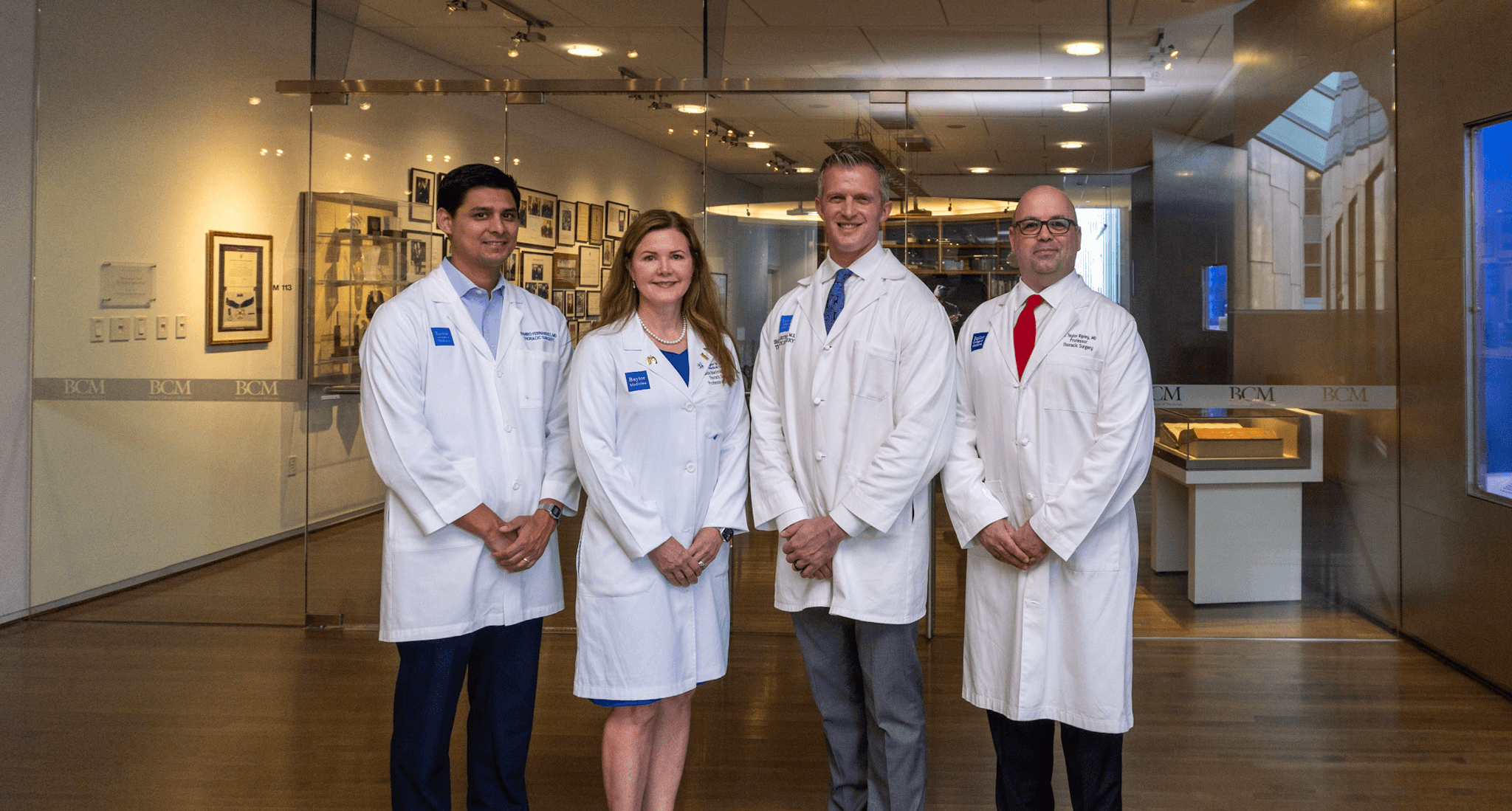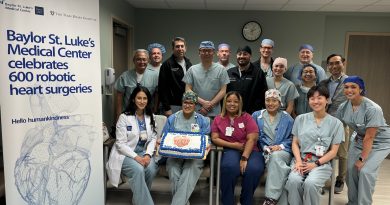Advancing lung cancer care: expert insights on screening and treatment options

Lung cancer remains the second most common cancer in the U.S. and is the leading cause of cancer-related deaths. Each year, approximately 228,000 new cases are diagnosed, with more than 130,000 deaths. Despite these sobering statistics, advancements in research and treatment options are offering new hope to patients. For Lung Cancer Awareness Month this November, thoracic surgeons Dr. R. Taylor Ripley, Dr. Ramiro Fernandez, Dr. Shanda Blackmon and Dr. Shawn Groth share their insights on the causes, symptoms, latest treatments and the importance of screening.
The primary cause of lung cancer continues to be smoking, responsible for approximately 85% of cases. “While smoking is the most well-known risk factor, exposure to secondhand smoke, radon, asbestos and other environmental toxins also play a significant role,” said Fernandez, assistant professor of surgery. “Genetics may also predispose certain individuals, especially if there is a family history of lung cancer. Our clinic offers smoking cessation counseling.”
The symptoms of lung cancer are often subtle in the early stages, making early detection challenging. “Common symptoms include a persistent cough, shortness of breath, chest pain, unexplained weight loss and coughing up blood,” said Blackmon, professor of surgery and executive director of The Lung Institute at Baylor Medicine. “However, many of these symptoms can easily be mistaken for other conditions, so people at high risk should undergo regular screenings.”
By the time most lung cancers are detected, they are already at an advanced stage, making early screening crucial for improving survival rates. “We are now seeing an increasing number of non-smokers diagnosed with lung cancer, which highlights the importance of understanding these other risk factors and screening for lung cancer in high-risk populations,” said Groth, associate professor and chief of the David J. Sugarbaker Division of Thoracic Surgery.
Screening, particularly with low-dose CT (LDCT) scans, is used to detect lung cancer early when it is more likely to be curable. “For individuals at high risk – typically those between 50 and 80 years old with a significant history of smoking – an annual low-dose CT scan is a vital tool,” said Ripley, professor and director of clinical trials in the Michael E. DeBakey Department of Surgery. “LDCT scans have been shown to reduce lung cancer deaths by detecting tumors at a stage when they are more easily treated.”
Criteria for low-dose CT scan screening:
- 50-80 years old
- 20-pack-year smoking history
- Reasonable health good enough to undergo lung cancer treatment if it is detected
Annual screening is recommended to gain the benefit of lung cancer screening.
The American Lung Association reports that if lung cancer is caught before it spreads, the likelihood of surviving five years or more improves to 63 percent. “LDCT is far more effective than a standard chest X-ray in finding small nodules that could indicate cancer, making it a life-saving option for early detection,” added Blackmon, who sits on the American Lung Association board of directors.
Treatment for lung cancer typically depends on the stage and type of cancer. Traditional treatments include surgery, chemotherapy and radiation therapy. “Surgical options, like lobectomy or pneumonectomy, are often used when the cancer is localized to the lung,” Ripley said. “Minimally invasive techniques, including robotic surgery and video-assisted surgery, have become standard for many of our patients, reducing recovery time and improving outcomes.”
In cases where surgery is not an option, other therapies come into play. “We use radiation or systemic therapies, like chemotherapy and immunotherapy, which can be particularly effective for shrinking tumors and targeting cancer cells that have spread,” Groth said.
One of the most exciting advancements in recent years has been targeted therapy. “These drugs specifically target mutations or proteins that allow cancer cells to grow, offering more personalized treatment and improving survival rates for patients with certain types of lung cancer,” Fernandez explained. At Baylor, the Systems Onco-Immunology Lab (SOIL), led by Dr. Hyun-Sung Lee, is a hub for translational onco-immunology research projects and unites a multidisciplinary team of surgeons, medical oncologists, immunologists and bioinformaticians. The SOIL lab is funded by the NIH, Department of Defense and the Cancer Prevention and Research Institute of Texas.
Immunotherapy also has transformed the treatment landscape. “Immunotherapy drugs stimulate the body’s own immune system to attack cancer cells. This has been a game-changer for patients with advanced-stage lung cancer, offering hope where traditional therapies may have failed,” Blackmon said. She went on to highlight ongoing research in the field: “One of the most promising areas of investigation is the use of liquid biopsies, which analyze circulating tumor DNA in the blood. This could revolutionize how we detect and monitor lung cancer, allowing for less invasive and more frequent assessments of treatment efficacy.”
Ripley and colleagues are enrolling patients in current clinical trials including whole genome exome sequencing, molecular testing and novel therapies for patients with lung cancer.
“With early detection and the latest treatment options, the five-year survival rate for localized lung cancer has increased to around 60%,” Blackmon said. “For those with metastatic disease, survival rates are still low but improving with new therapies.”
Lung Cancer Awareness Month serves as a reminder for patients and families. Ripley, Fernandez, Blackmon and Groth all agree: early detection saves lives. If you meet the criteria for lung cancer screening, call the Lung Institute at (713)798-LUNG or the Dan L Duncan Comprehensive Cancer Center at (832) 957-6500 to get scheduled for lung cancer screening now.
By Tiffany Harston, senior communications associate in the Michael E. DeBakey Department of Surgery



